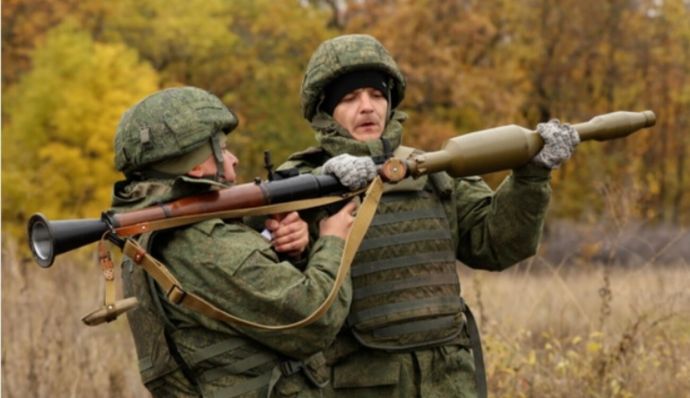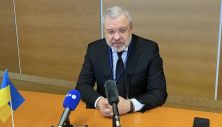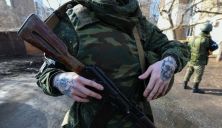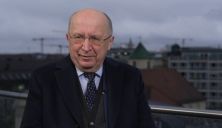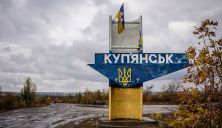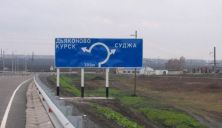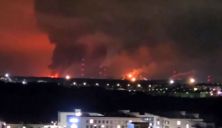How will mobilization affect the situation at the front? Is it capable of changing the balance of power, or has it become another “window dressing”, “playing muscles”? Has it been completed, according to the media, or will it continue, but not so clearly? And how many will the Kremlin send to the front – 300,000, as promised, or up to a million, as the Russian opposition is talking about? Read about all this in the author’s section of Oleksiy Matsuka, editor-in-chief of the FREEDOM TV channel.
When journalists asked Putin whether a decree would be issued to end the mobilization, he said that he “did not think” whether it was necessary to announce that it was completed by decree. At the same time, lawyers and human rights activists unanimously say that while there is no formal decision, it is possible to start sending summonses again at any moment.
“The need for a new round of mobilization calls may arise at any moment. Until the partial mobilization is completed by the official who announced it, the legal regime is preserved,” says Pavel Chikov, head of the Agora human rights organization.
And this essentially means that Russians can now be taken to the front without much publicity.
The Russian State Duma in these conditions continues to change the legislation under the new, military realities. Prepares, for example, a bill on criminal punishment for evading mobilization. The initiator is the defense committee, which prepared changes to other laws in order to legally “cover up” the invasion of Ukraine.
Now, from November 1, Russia is conducting a planned call-up of conscripts, which was postponed from October 1. With him, too, not everything is so simple, given that the legislation is being rewritten simply “on the go”. The assurances of the authorities that the “conscripts” will not be sent to war cannot be trusted – public figures are sure of this.
At the same time, the American Institute for the Study of War also points to the possible participation of “conscripts” in hostilities in its forecast. They saw another legal loophole. Martial law in the occupied and annexed territories allows you to send “conscripts” without preparation. After all, according to Russian laws, this is the territory of the Russian Federation.
The Ministry of Defense of the Russian Federation needs time to “digest” the number of mobilized people who have already been called up. And there is not enough equipment for them, and the agendas were handed to everyone in a row, which means that a huge part of the mobilized turned out to be with zero training. Some mobilized did not even do military service.
And in general, the entire Russian system of power turned out to be unprepared for the transition to martial law. And Putin’s answers at the Valdai Forum show that he has neither a clear plan for conducting a war in Ukraine, nor a clear military strategy … Sources in diplomatic circles claim that Putin is in an information vacuum and, in principle, does not know about the losses and failures of his army.
So is mobilization in Russia capable of changing the situation at the front?
Military experts have said from the very beginning of the war that mobilization is unlikely to improve the combat capability of the Russian army. After all, all these years they were preparing to participate in local conflicts, not wars.
“The Russian army has been optimized for a short aggressive war, but it does not have the ability to wage a long conventional war, having at its disposal forces intended for peacetime,” notes American military expert Michael Kofman.
According to military experts, Russia started the war with Ukraine with a lot of military equipment, but with a shortage of personnel. And after serious human losses in the first months of the war, it turned out that there was no one to fight. Hence the hasty mobilization.
The Russian army fights using so-called “battalion tactical groups”. When formally, from 600 to 800 soldiers with mandatory technical support should be combined into one BTG. At the start of the war, 136 BTG entered Ukraine. But according to the data available to the Pentagon, Moscow launched the invasion under conditions when they reported “upstairs” about the required number of such “tactical groups”, but in many of them there were not even half of the fighters.
Now 300,000 mobilized are almost 400 full-fledged BTGs. That is, in fact, now the Ministry of Defense of the Russian Federation wants to gather twice as many soldiers as in February, at the time of a full-scale invasion. For such a number, according to the standards, for example, more than 4 thousand tanks are needed. And this is twice as much as it was as of February 24. But it is impossible to provide these groups, and not only with heavy equipment.
“They are transferred in the format of marching battalions – this is the concept of the Second World War. I think everyone remembers the Soviet films very well, when the slender columns of the Soviet army with rifles, with raincoats along the roads went to the front. This is how marching battalions are: a rifle, a raincoat, a helmet and an officer on a white horse, without tanks, without an appropriate amount of artillery. This is the difference,” explained military expert Oleksandr Kovalenko.
The British Ministry of Defense writes in its daily report on the situation in Ukraine that Russian conscripts are sent to the front with AKM assault rifles (a version of the Kalashnikov assault rifle from the early 60s), which use 1943 cartridges. At the same time, the regular army uses more modern machine guns and cartridges for them. How are they going to fight when even this is a mess and confusion?
The presence of mobilized people is now being recorded in different parts of the front line. In particular, on the left bank of the Kherson region, in the north of the Lugansk region (Svatovo-Kreminna), in the Donbas (Bakhmut and Avdeevsky districts). That is, in those sectors of the front where active hostilities are taking place.
Yes, by “plugging holes” in the defense, after the defeat of the Russian forces near Kharkiv, they managed to stop the advance of the Armed Forces of Ukraine in certain sectors of the front. But the situation at the front now depends not on the number of “bayonets”, but on the nature of the hostilities. The tactics of the Ukrainian army is to use high-precision Western artillery and strikes at the rear.
Mobilization turned Russian society into a direct participant in the war. The war, in fact, came to every family. And in order to prevent discontent now, and it will definitely accumulate, the Kremlin is calling for a “people’s war”. Due to the imaginary “complicity” of everyone in the war, the Kremlin wants to get support. But there is an important point here: after all, Russia is not waging a defensive, but an aggressive war. And for the first time, Russians began to receive information not from TV, but from relatives who were called. And they do not talk about victories and patriotism at all, but about inhuman conditions for soldiers, about the lack of material and technical support, about the horrors of war.
The mess and chaos with the mobilization showed that militarily, all the problems that Russia is currently experiencing at the front were laid down at the system level. And mobilization for Putin is rather an instrument of escalation. Both in the foreign arena and within the country. He intends to frighten external enemies with the possibility of full mobilization, in case the war goes over to Russian territory. But he uses mobilization within the country as a tool to strengthen support for the authorities. So, under various pretexts, with varying degrees of publicity in Russia, they will continue it.

